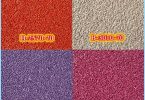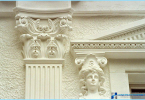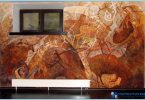One of the most common compositions for plastering walls and ceilings is cement-sand mortar. It is very simple in its composition: water, sand and cement. The plastering of walls with cement-sand mortar is quite rude and is often used for smoothing and different initial surface preparation for further processing, e.g. plasters, plaster-based, or a sticker tiles. Also, this solution is used for the treatment of the facades and other exterior walls of buildings. Sand-cement plaster is not exposed to excessive moisture, strong and durable.
Note, it does not transmit water vapor. In the bathroom or in the kitchen it will lead to the formation of condensation on the walls with all the consequences – mold, fungi and slippery from moisture floors. The problem is solved by the additional treatment with antiseptics.
The big advantage of cement-sand plaster is its dimensional stability. The volume of the mixture practically does not change in the drying process that avoids the formation of cracks on the finished surface.
Recipe of the solution and its application ↑
The ratio of the components depends on the brand of cement. Is the best cement grade 400, and for internal works enough M200. It is mixed with water and sand in the ratio of 1:0.5:4 respectively.
All components are mixed in the container, preferably the first to fall asleep sand. Then poured over water and the resulting solution is poured cement. It is better to use sifted river sand, not containing impurities of silt or clay, which may have an impact on the quality of the plaster.
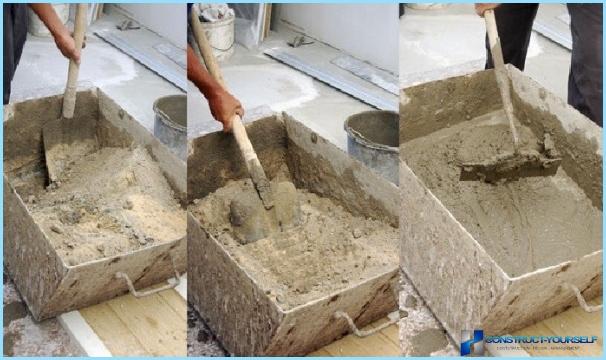
More than a small fraction of sand is used in the preparation of the solution, the more smooth and neat surface after drying.
One of the drawbacks of cement-sand plaster is a lot of weight, which is why it is not recommended to put on flimsy grounds, for example, plasterboard walls. The mixture can be facilitated if part of the sand in the mortar be replaced by a more light lime. But this should be approached with caution.
The excess of lime will reduce the adhesion of the solution with the surface. You need to use only carefully quenched lime, otherwise forming during quenching, the gas bubbles will lead to the swelling of the plaster on the wall. Extinguish the lime in the water for at least two weeks.
Properly prepared cement-lime plaster for strength and durability almost as good as cement-sand, has the best elasticity, but costs a little more.
Next, carefully mix the solution and allow to soak in 10-20 minutes. This is followed again to mix the plaster and apply it on the work surface.
The optimum thickness of the layer of mortar on a brick wall – not more than 25 mm When it is exceeded, the plaster can form nodules. Also deteriorating the adhesion of the solution with the surface, and it can start to crumble. Usually this thickness is enough to align the walls and prepare the base for further processing.
If you need to apply a thicker layer of plaster, use reinforced mesh. It’s put on the wall and serves for better adhesion of the solution with the surface.
The grid will also be required with a substantial slope wall, which is needed to neutralize by changing the thickness of the plaster.
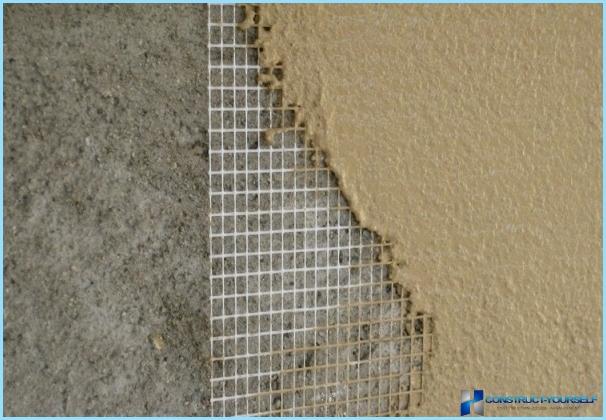
It is important to apply the solution only at a positive temperature. The cold water freezes, and the plaster quickly turns to stone. If you still need to perform work in the winter, there are additives that prevent freezing of the solution at temperatures down to minus 20 degrees. Also available in a special winter grade of plaster. When using it it is advisable to apply the solution on the wall by the method of wetting. Its essence is that the mixture dramatically and quickly rushes to trowel on the wall without smoothing and leveling with a spatula. This is necessary to plaster as soon as possible “grabbed” for a working surface and did not have time to freeze.
Very hot weather is not suitable for plastering. The solution will dry quickly. In such cases it is recommended to periodically pour a little of the mixture with water.
There are three ways of applying the plaster:
- simple, not involving any additional surface treatment;
- a composite in which the layer deposition occurs at least in three stages and includes a preliminary surface treatment to improve gripping properties, directly laying the plaster and the subsequent finish coat. The quality of the coverage, of course, much better.
Compound plaster may include a number of additional stages – the installation of beacons, applying several layers of spray, the additional priming.
Need to concrete or brick base was completely dry, otherwise it may disrupt the adhesion of plaster to the surface. It is recommended to plaster a brick wall after at least a month after laying, the concrete three months after potting.
Video instruction on the use of cement-sand plaster:
At a layer thickness of 10 mm consumption of plaster is a minimum of 9-10 kg per 1 m2. But this is the approximate value. Consumption increases significantly (sometimes almost twice) with the slope of walls or absorbent surfaces (for example, when the wall is made of old crumbling bricks).
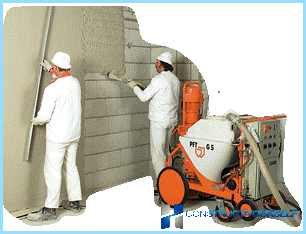
A plaster suitable for hand and machine.
Painting or puttying plaster surface is recommended after two weeks after applying the layer, laying glazed tiles – in 3-4 days.
Factory mix ↑
Despite the possibility of preparing a solution with their own hands, many manufacturers produce ready cement-sand mixture for plastering. As a rule, they are of higher quality than hand-made, as in the factory strictly follows the ratio of the components used carefully sifted the sand and added different components to improve the characteristics of the material.
One of the leaders in the production of finishing materials of German company Knauf, offers facade blends Unterputz and thermal insulation of Grunland. They are very good, but also quite expensive.
A reasonable alternative is the production of domestic producers: “Basis”, “Prospectors” and “VOLMA”. These companies produce a wide range of quality of finishing materials, including cement and sand mixture.
For example, plaster “Prospectors” contains besides water, sand and cement M500 also lime, set of additives and fiber to prevent cracking. This summer the plaster, designed for use at temperatures above +10 degrees.
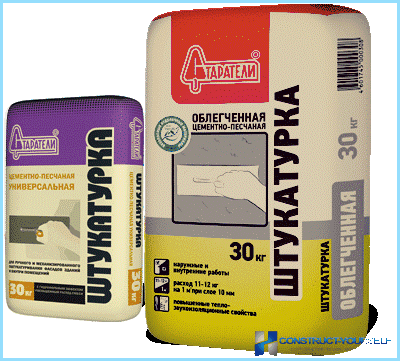
Its main features are:
- the maximum thickness of layer (without reinforcing mesh) – 20 mm;
- the color of the dry mix, grey;
- the flow rate of the mixture to 12 kilograms per m2;
- the ability of the plaster to maintain the quality while in the open air at 20 degrees heat for 90 minutes;
- the proportion of dilution with water in the kneading – 0.22 liters per kilogram.
Company “VOLMA” produces a lightweight blend “Aquaclay” with the addition of lime.
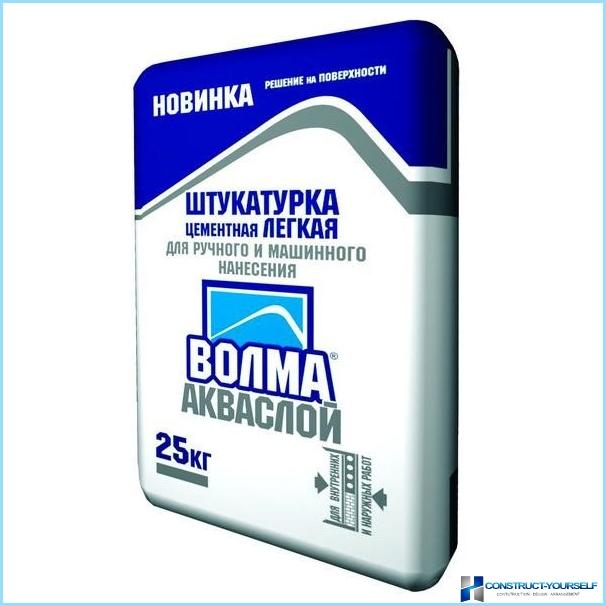
Its characteristics:
- the thickness of the layer of application without the use of reinforcing mesh – up to 30 mm, with mesh – 60 mm;
- the ability of the plaster to maintain the quality while in the open air at 20 ° C – 120 minutes;
- the flow rate of the mixture – 11-12 kilograms;
- the proportion of dilution with water in the kneading – 0.3 liters per kilogram.
To improve the adhesion with suboptimality and smooth surfaces, such as concrete, it is recommended to treat the surface with primer. “VOLMA” produces the starting solution “Contact” for concrete bases and “VOLMA-Universal” for masonry of silicate bricks and ceramic bricks.


